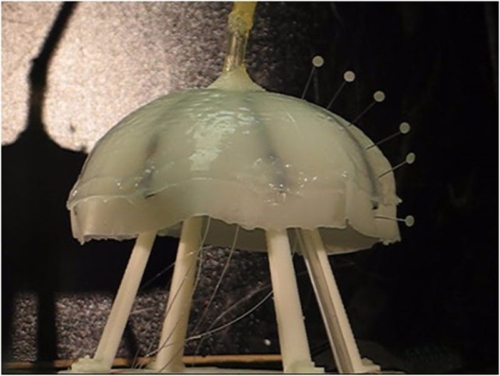Scientists from the Virginia Polytechnic Institute and State University, Virginia Tech and The The University of Texas at Dallas have developed a self-powered and pollution-free undersea vehicle based on nanotechnology.
 The Robojelly, shown here out of water, has an outer structure made out of silicone.
The Robojelly, shown here out of water, has an outer structure made out of silicone.
Common moon jellyfish was the inspiration for the Robojelly, which uses renewable energy as a power source and may be utilized in surveillance and ocean safety missions. According to Dr. Yonas Tadesse, one of the researchers, the team has designed an underwater robot that runs without electricity or batteries and releases only water as waste.
In their latest study, the scientists converted the earlier battery-powered version of the Robojelly into a self-powered robot. The latest Robojelly comprises two silicone-based bell-like structures, which can be folded like an umbrella. Artificial muscles made of high-tech materials connect these umbrella-like structures. These muscles are produced by wrapping carbon nanotubes over a nickel-titanium alloy, followed by a platinum coating. The structure is then placed in a pipe.
Hydrogen Fueled Robot JellyFish 'RoboJelly'
When the hydrogen-oxygen mixture contacts the platinum, water vapor and heat are generated. The generated heat makes the muscles to contract, which in turn moves the device by pumping out water and repeating the aforementioned cycle.
Tadesse informed that this underwater device is capable of refueling itself, while carrying out surveillance activities. The device can also be utilized to determine the pollutants in water. The next step of the researchers is to upgrade the legs of the robots to make them move independently and travel in several directions.
The Office of Naval Research has funded the study.